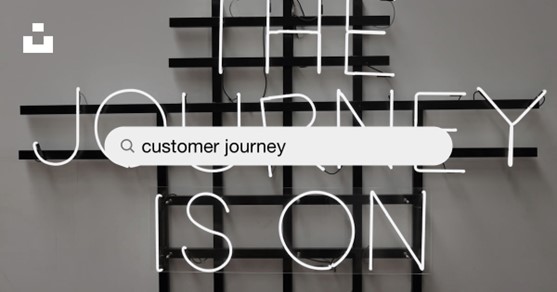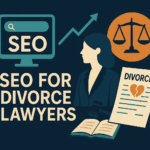Every solo practitioner should have some understanding of the three stages of the legal consumer’s buyer’s journey: awareness, consideration, and decision.
In this article, we will cover the following:
•Creating tailored content for each stage of the legal consumer’s buyer’s journey, from awareness to decision-making.
•Tips and strategies for crafting content that educates, informs, and persuades potential clients at every stage.
•The importance of measuring the effectiveness of content at each stage and using data-driven insights to optimize content strategies.
Stage 1: Awareness – Creating content that educates and raises awareness
During the awareness stage, potential clients are just starting to realize they have a legal need. They may be searching for general information or trying to understand the implications of their situation. To capture their attention and establish your firm as a trusted resource, creating content that educates and raises awareness is essential.
One effective way to create content at this stage is through informative blog posts. These can cover a wide range of topics related to the legal issues your potential clients may be facing. For example, if you’re a personal injury lawyer, you could write blog posts on topics such as “What to do after a car accident” or “Understanding your rights as a victim of medical malpractice.”
Educational videos are another excellent content format for the awareness stage. Videos allow you to explain complex legal concepts in a more engaging and easily digestible format. Consider creating short videos that address common legal questions or provide an overview of the legal process for specific types of cases.
Infographics are also effective at capturing attention and presenting information in a visually appealing way. You could create infographics that explain legal terminology or outline the steps involved in a specific type of legal case. These visuals can be easily shared on social media, increasing your reach and visibility.
Remember, the key to creating content for the awareness stage is providing valuable information that educates your potential clients and establishes credibility.
Stage 2: Consideration – Providing informative content that helps potential clients evaluate their options
During the consideration stage, potential clients are actively evaluating their options and looking for solutions to their legal needs. They may be comparing different law firms, seeking advice on how to proceed, or researching their rights and responsibilities. At this stage, your content should provide valuable information that helps potential clients evaluate their options and positions your firm as a trusted authority in the practice area.
One effective way to provide informative content at this stage is through in-depth guides and ebooks. These longer-form pieces of content allow you to dive deeper into specific legal topics and provide comprehensive information. For example, you could create a guide on “Choosing the Right Personal Injury Lawyer: A Step-by-Step Guide” or an ebook on “Understanding Divorce Laws in [Your State].”
Case studies are another powerful content format for the consideration stage. You can demonstrate your track record of success by sharing real-life examples of how you’ve helped previous clients. Case studies should highlight the challenges your clients faced, the strategies you employed, and the positive outcomes achieved.
Webinars and live Q&A sessions are also effective for the consideration stage. These interactive formats allow potential clients to ask questions and receive real-time answers from you. Consider hosting webinars on topics that potential clients are likely to be interested in, such as ” 7 Small Business Laws Every Owner Should Know ” or “Protecting Your Intellectual Property: Key Considerations.”
Remember, the key to creating content for the consideration stage is to provide valuable and detailed information that helps potential clients evaluate their options and seek resolutions to their legal needs.
Stage 3: Decision – Creating content that convinces potential clients to choose your law firm
The decision stage is when potential clients are ready to choose and hire an attorney. At this stage, your content should be persuasive, aiming to differentiate your law firm from the competition and demonstrate why you are the best choice for their needs.
One effective content format for the decision stage is client testimonials. Testimonials provide social proof and demonstrate the positive experiences previous clients have had with your firm. Consider featuring testimonials on your website or creating dedicated video testimonials that potential clients can watch.
Free consultations or case evaluations can also be effective content offers at the decision stage. By offering potential clients the opportunity to speak with you directly and receive personalized advice, you can demonstrate your commitment to their case and build trust. Promote these offers through targeted website landing pages and online advertisements.
Remember, the key to creating content for the decision stage is to be persuasive and convincing. You want to differentiate your law firm from the other local attorneys in your practice area and prove why potential clients should choose you. By showcasing positive client experiences, highlighting your unique selling points, and offering personalized consultations, you can increase the likelihood of converting potential clients into paying clients.
Tailoring content for different buyer personas
While creating content for each stage of the legal consumer’s buyer’s journey is essential, it’s also crucial to consider the different buyer personas within your target audience. Individuals will have different pain points, motivations, and preferences when it comes to consuming content.
To effectively tailor your content for different buyer personas, start by identifying the critical personas within your target audience. These could be individuals in different industries, with different legal needs, or at different stages of their professional or personal lives. Once you have identified these personas, research to understand their specific pain points, motivations, and preferred content formats.
For example, if you specialize in family law, you may have different buyer personas, such as divorcing parents, couples considering adoption, or individuals seeking legal advice for child custody disputes. Each of these personas will have unique concerns and preferences when it comes to content. Divorcing parents may be interested in blog posts on co-parenting strategies or videos on navigating the divorce process, while couples considering adoption may prefer in-depth guides on the legal requirements for adoption.
By tailoring your content to specific buyer personas, you can increase its relevance and effectiveness. Consider creating separate content strategies for each persona, focusing on the topics, formats, and channels that resonate most with them. This targeted approach will help you better connect with prospects.
Measuring the effectiveness of your content at each stage of the legal consumer’s buyer’s journey
Creating content for each stage of the legal consumer’s buyer’s journey is only half the battle. To ensure your content marketing efforts are successful, it’s crucial to measure the effectiveness of your content at each stage and make data-driven decisions to optimize your strategy.
To measure the effectiveness of your content during the awareness stage, track metrics such as website traffic, social media engagement, and blog post shares. Use tools like Google Analytics, Facebook Insights, and social media management platforms to gather data on how your content is performing. Analyze this data to identify trends, understand what types of content resonate most with your audience, and adjust your content strategy accordingly.
During the consideration stage, focus on metrics that indicate engagement and interest. Track metrics such as time spent on a page, number of downloads, and click-through rates on your offers. Use tools like heatmaps and user behavior tracking software to gain insights into how potential clients interact with your content. This data will help you understand which pieces of content are most effective at capturing and holding their attention.
Finally, during the decision stage, measure metrics that indicate conversion and action—track metrics such as form submissions, email sign-ups, and consultation requests. Use tools like Google Analytics and conversion tracking software to attribute these actions to specific pieces of content. This data will help you understand which content most effectively convinces potential clients to take the desired action and hire your firm.
Remember, the key to measuring the effectiveness of your content is to establish clear goals and key performance indicators (KPIs) for each stage.
Ready to attract more clients to your law office? Book an appointment with me today to discuss how I can tailor your content to engage clients at every stage of the buyer’s journey. Let’s collaborate to enhance your online presence and grow your client base.





